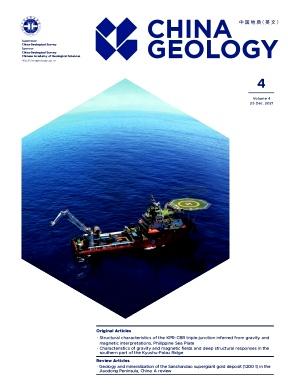Optimization of production well patterns for natural gas hydrate reservoir: Referring to the results from production tests and numerical simulations
IF 4.7
3区 地球科学
Q1 GEOSCIENCES, MULTIDISCIPLINARY
引用次数: 0
Abstract
Natural gas hydrate is a clean energy source with substantial resource potential. In contrast to conventional oil and gas, natural gas hydrate exists as a multi-phase system consisting of solids, liquids, and gases, which presents unique challenges and complicates the mechanisms of seepage and exploitation. Both domestic and international natural gas hydrate production tests typically employ a single-well production model. Although this approach has seen some success, it continues to be hindered by low production rates and short production cycles. Therefore, there is an urgent need to explore a new well network to significantly increase the production of a single well. This paper provides a comprehensive review of the latest advancements in natural gas hydrate research, including both laboratory studies and field tests. It further examines the gas production processes and development outcomes for single wells, dual wells, multi-branch wells, and multi-well systems under conditions of depressurization, thermal injection, and CO2 replacement. On this basis, well types and well networks suitable for commercial exploitation of natural gas hydrate were explored, and the technical direction of natural gas hydrate development was proposed. The study shows that fully exploiting the flexibility of complex structural wells and designing a well network compatible with the reservoir is the key to improving production from a single well. Moreover, multi-well joint exploitation is identified as an effective strategy for achieving large-scale, efficient development of natural gas hydrate.
天然气水合物储层生产井网优化——以生产试验和数值模拟结果为依据
天然气水合物是一种具有巨大资源潜力的清洁能源。与常规油气不同,天然气水合物是由固体、液体和气体组成的多相体系,具有独特的挑战性,渗流和开采机制也较为复杂。国内外天然气水合物生产试验通常采用单井生产模型。尽管这种方法取得了一些成功,但它仍然受到生产率低和生产周期短的阻碍。因此,迫切需要探索新的井网,以显著提高单井的产量。本文全面综述了天然气水合物研究的最新进展,包括实验室研究和现场试验。进一步研究了单井、双井、多分支井和多井系统在降压、热注入和二氧化碳替代条件下的产气过程和开发结果。在此基础上,探索了适合天然气水合物商业开发的井型和井网,提出了天然气水合物开发的技术方向。研究表明,充分利用复杂结构井的灵活性,设计与油藏相适应的井网是提高单井产量的关键。多井联合开发是实现天然气水合物大规模、高效开发的有效策略。
本文章由计算机程序翻译,如有差异,请以英文原文为准。
求助全文
约1分钟内获得全文
求助全文

 求助内容:
求助内容: 应助结果提醒方式:
应助结果提醒方式:


